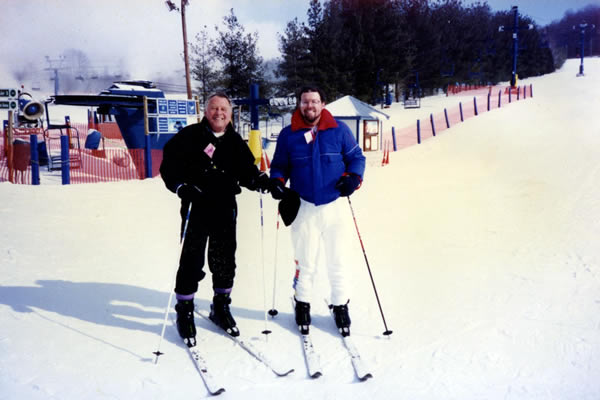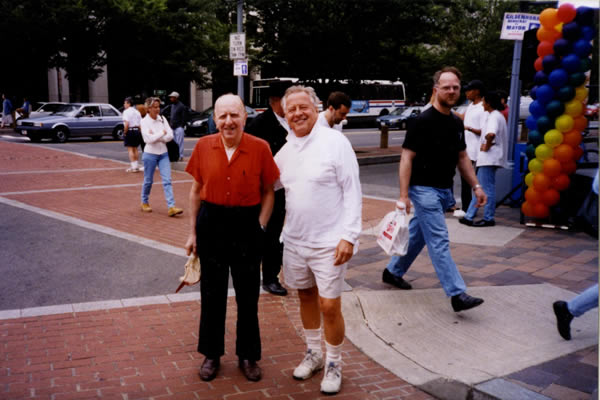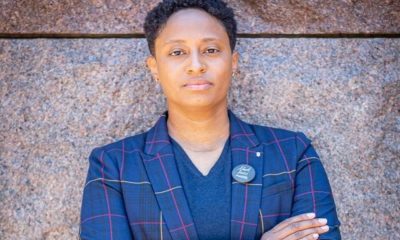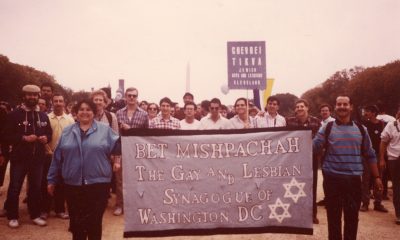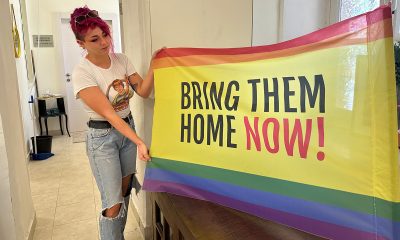Living
Labor of love
Md. man remembers late spouse, years of activism
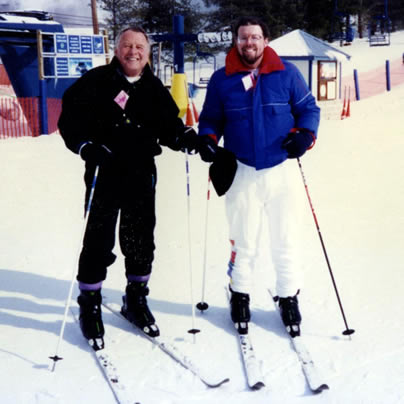
GLEN BURNIE, Md.—Larry Esser was 25 when he met Tom Toth on his first day of work at the old Chessie System’s office in Baltimore in June 1981. The Centers for Disease Control and Prevention had just reported the first cases of what later became known as AIDS. Maryland’s anti-sodomy law was still on the books, but Toth, who was 32 years older than Esser, felt it was important to live his life as an openly gay man.
“Tom kind of pursued me, to put it quite bluntly,” Esser tells the Washington Blade during a Dec. 13 interview. “I really liked him, that’s the funny thing. I didn’t feel like he was imposing himself or anything like that … he’s the bravest person I’ve ever met. His personal courage astonished me.”
Esser stressed he “had no idea I was gay” when he met his future spouse. He grew up in what he describes as an “extremely strict Roman Catholic household” in Connecticut where he routinely heard gay people “were probably worse than murderers and they were to be avoided at all costs” and they were “mentally defective.” Esser eventually found himself in a relationship with another man he conceded wasn’t “going anywhere” when Toth finally made his move.
“He was sitting at his desk and he was singing,” Esser recalls, laughing. “It was like in a joking sort of way he was singing and the other people around him were laughing when he was doing it and he was singing something about it’s springtime and it’s time for love. The way he tells this story, I came in the door and heard him singing that and I tried to sneak away. I didn’t want any part of that. And he saw me and he said, ‘Uh oh.’ And that’s when he began to realize that I was not what he thought I was. How can you explain how two people fall in love? I can’t explain that. But it just happened. I wasn’t afraid of him personally.”
Couple’s activism starts at home
The couple routinely engaged in what Esser calls “guerrilla activism” that began when he said the railroad fired him after they began dating in 1983 because of his sexual orientation. He considered moving back to Connecticut, but Toth insisted he move into the small Glen Burnie home he shared with his then-84-year-old mother, Mary.
“There was no arguing with that,” Esser says. “The funny thing is when he said it, it was exactly what I wanted to hear, but of course I couldn’t ask him that. It was up to him to ask me, and he did. And I was delighted.”
Esser took care of Toth’s elderly mother until she died the following year. He says the same Chessy System vice president whom he claims fired him threatened to do the same to his partner once he found out they were living together. (He says the railroad in the late 1970s had tried to fire an early member of the Baltimore Gay Alliance that later became the GLBT Community Center of Baltimore and Central Maryland, but the union fought for him.)
“He couldn’t do it directly,” Esser says, recalling efforts to fire Toth, who was a unionized stenographer. “He did a bunch of different things to try to get Tom to quit. And amazingly, Tom was actually ready to resign. A woman whose name I can’t remember, but will always be grateful to her told him don’t resign because the railroad is going to do a bunch of buyouts and you’ll be able to get a lump sum payment and retire, and that’s what he did.”
The couple also for years distributed copies of the Blade at locations throughout Anne Arundel County.
They decided to approach the Anne Arundel County Public Library Board of Trustees in Annapolis in 1993 after they read about the newspaper’s threatened lawsuit against the Fairfax County (Va.) Library for its proposed ban on the publication’s distribution inside its branches. Esser said Toth was “really rough with them,” in part because “he’d gone through a very repressive time back in the 1950s.” (He lived in Manhattan for 25 years and the New York Police Department once arrested him during a gay bar raid.)
“When we got to the library board, he told them point blank, ‘You’d better do this,’” Esser says. “They were not happy. They were not happy at all. I think some of them were actually kind of sympathetic to what we wanted to do, but they were taken aback by how assertive he was. They weren’t used to that. The library board is used to people coming and requesting things, not telling them what they’re going to do. And they were not happy.”
Esser says one of the board members later told him the board did not want to meet with Toth anymore because “he was very blunt,” but in the end they granted them permission to place 15 copies of the Blade in libraries in Glen Burnie, Severna Park and Annapolis. They continued distributing the Blades each week from the Center for more than two decades.
“By putting the paper there, I always felt that, I always wondered … if a young person going by thinking they were maybe gay or knew they were gay but felt very isolated, if they saw those papers, maybe that would give them a little bit of encouragement or a little bit of reassurance. But the other point was just sheer visibility. By having those papers there, Tom used to say … if even one person picks one up, he said even if they throw them away they still got to look at them. And that was an excellent point. And he was quite right. That meant a lot to us.”
Trust the truth
The AIDS epidemic had begun to exert its toll on gay men by the time the couple began dating — Esser recalls a time both he and Toth went to a small Severna Park health clinic to get HIV tests. Toth says the nurse asked him whether he was a gay man. “He said that was the first time in his entire life anyone asked him that directly,” Esser says. “He had never been asked that question.”
Esser says he felt the atmosphere during the late 1980s was “pretty optimistic” in spite of the epidemic and late-North Carolina Sen. Jesse Helms, fundamentalist preachers Jerry Falwell and Pat Robertson and other social conservatives who sought to demonize gay men during the AIDS crisis.
“Oddly enough, Tom never disliked [then-President Ronald] Reagan, but I think that’s because he remembered him from his movie star days,” Esser says. “He felt Reagan didn’t understand the whole situation that he was dealing with AIDS and gay people. He felt that Reagan really just didn’t understand it. It’s not that he was anti-gay particularly; he just didn’t really know what he was doing … I didn’t feel so kindly to Reagan at all. I thought he was just horrible.”
Toth and Esser also became involved in the effort to add sexual orientation to Maryland’s non-discrimination law in the 1990s.
He recalls one legislator who was “really being ridiculous, saying really ugly things about us” during a hearing on the measure in Annapolis. One of this lawmaker’s colleagues who had refused to listen to his speech asked Toth and Esser how they could stand to hear his rhetoric.
“Tom said, ‘Well we know it isn’t true, so we don’t worry about it,’” Esser says. “Of course you’ve got to fight. You can’t let people say things that aren’t true and let them say it without challenging it. And Tom did that. But at the same time you can’t let it stop you. You can’t let that negativism stop you. You have to keep fighting, pushing against it and that’s what Tom really, really did.”
Esser notes that Toth’s life spanned the same period through which Frank Kameny lived — the two met during the 2000 D.C. Pride parade. And Esser says when they met, it was as if they were kindred spirits.
“They were really speaking the same language,” he says, noting both Esser and Kameny came of age in the 1950s when lobotomies were performed as a way to cure homosexuality. “It was very impressive for me being a younger person relative to them seeing what these two men must have come through and how they were both so determined to do what they were doing. They refused to back down. They refused to accept what they were being told they had to accept. They wouldn’t do it. And that was a beautiful thing to me. It’s a moment I will never forget.”
Mesothelioma that Toth developed from asbestos exposure while working at a Baltimore shipyard that built liberty ships during World War II had already taken its toll by the time Gov. Martin O’Malley signed the state’s same-sex marriage law in March.
Toth and Esser legally married in D.C. in 2010, but he wanted to vote for both Question 6 and President Obama on Election Day. He applied for an absentee ballot because he did not think he would live until Nov. 6.
It arrived in the mail in early October.
“It came and I said do you want to sign it?,” Esser, who fought leukemia at the same time his spouse struggled with mesothelioma, says. “And he said, ‘No, I’ll do it tomorrow. Well the next day he wasn’t strong enough.”
Toth died three days later — on Oct. 11 — at age 88.
“He never did sign the absentee ballot,” Esser says. “He was very aware of what was going on. He was politically interested. He definitely wanted Obama to win. We just detested Romney. The hardest thing to communicate to people who were not gay (is) how much Obama had done to us, compared to everybody else.”
Esser says Toth wondered whether history would remember Obama along the same lines as Franklin Roosevelt in terms of “what he had done, particularly for gay rights.”
“When you come from a time where you were ignored totally … and suddenly here’s the president and he’s doing all these executive orders and this happening and that’s happening and then he comes out in favor of same-sex marriage, well that’s fantastic,” Esser says. “He was just delighted.”
Related content:
Great places to get married in Maryland
Before you wed — legal considerations
Autos
Sporty sedans: BMW 530i xDrive, Mercedes AMG CLA 3
Tariffs are here and the result is financial chaos

It’s official: Tariffs are here, and the result is financial chaos.
So, what to do when purchasing a new vehicle? If you need one in the not-so-distant future, buy sooner (like yesterday) rather than later. Expect prices to rise quickly, as inventory dwindles, demand soars, and automaker incentives evaporate. Of course, if a new ride isn’t a priority for at least a year or three, then hold off until the dust settles.
But for those of you looking for new wheels now, I recently drove two sport sedans that were a pleasant reprieve from the usual plethora of pickups, minivans, and SUVs.
BMW 530i xDRIVE
$63,000
MPG: 28 city/35 highway
0 to 60 mph: 5.5 seconds
Cargo space: 18.4 cu. ft.
PROS: Rakish looks. Race-car vibe. Rock-star amenities.
CONS: Rad-but-quirky infotainment system. Rich price.
IN A NUTSHELL: Classic good looks, from the iconic grille and swept-back headlights to chiseled side panels and a tasteful tush. For a gearhead like me, the BMW 530i xDrive — completely redesigned last year — is as rapturous as Michelangelo’s David. Everything here is in proportion, from the design to the drivetrain, which — along with a gutsy 255-hp turbo and all-wheel drive — helps deliver a divine experience behind the wheel. Even better, my test car came equipped with the heavenly M-Sport Package: 21-inch wheels, athletic suspension, and assorted styling upgrades.
A tech-laden cabin is outfitted with a sparkly 12.3-inch digital instrument cluster and 14.9-inch touchscreen infotainment system. With the windshield head-up display and a slew of knobs and toggle switches in the center console and on the steering wheel, I wondered if this is how it feels to pilot the Space Shuttle. There is even a back-lit interaction bar with touch-sensitive controls to adjust vent direction and other climate control settings.
All this gadgetry takes some getting used to, but the overall effect is dazzling. While a 12-speaker Harman Kardon stereo comes standard, I was jammin’ to the 16-speaker Bowers & Wilkins premium audio. Of course, such options add up quickly (on my test car, the extras totaled $13,000).
Just how fun is this car? In my favorite episode of “Hacks,” sassy Jean Smart drives a rockin’ Rolls Royce Wraith. Trust me, this four-door BMW is every bit the badass as that $300,000 super coupe.
MERCEDES AMG CLA 35
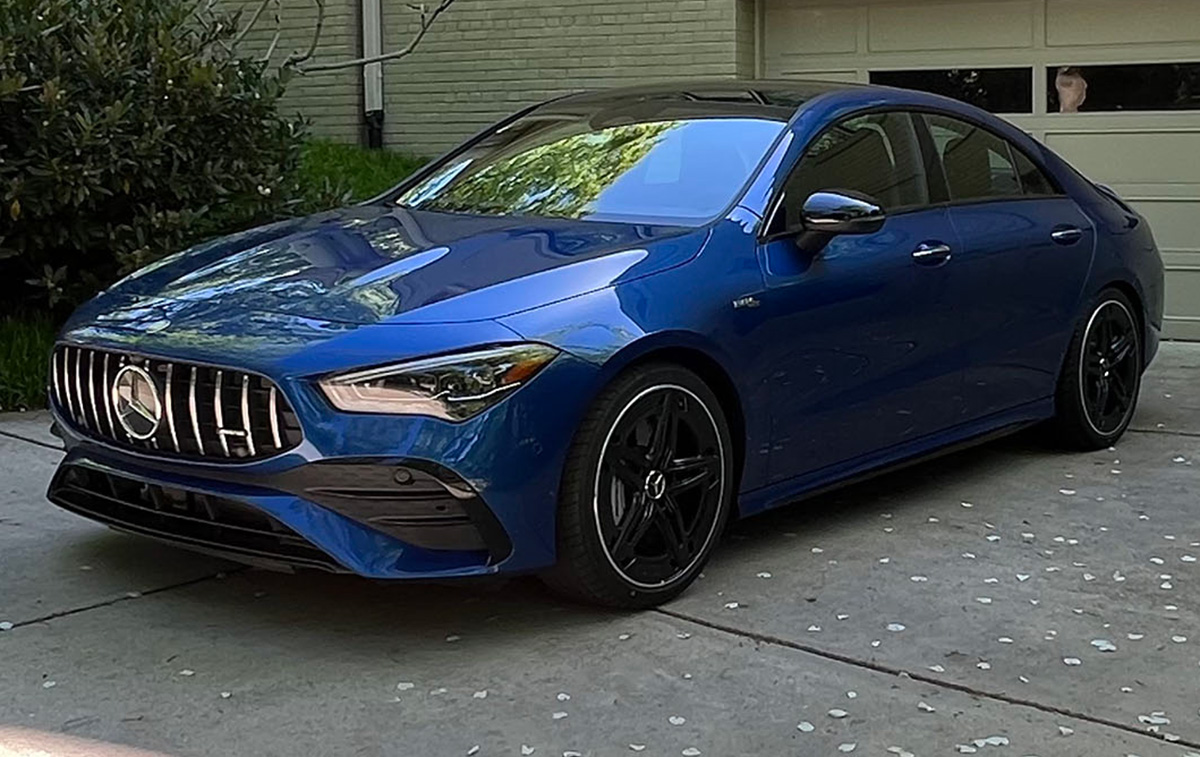
$58,000
MPG: 22 city/29 highway
0 to 60 mph: 4.8 seconds
Cargo space: 11.6 cu. ft.
PROS: Slick styling. Spiffy cabin. Sublime seats.
CONS: Smallish trunk. So-so rear headroom and legroom.
IN A NUTSHELL: Need a smaller sedan that’s just as marvy as the midsize BMW i530? Look no further than the compact Mercedes CLA-Class, which is 14 inches shorter. That’s a benefit when jockeying for parking or navigating rush hour.
Another plus: This is Mercedes’s least expensive sedan, available in three trim levels. All come with the same potent turbo but in varying power levels. The base model starts at $46,000, but I tested the first of two high-performance versions: the AMG CLA 35, which costs $12,000 more. You can open your wallet even further to snag the $67,000 AMG CLA 45.
But why bother? The AMG CLA 35 is plenty quick — faster than the BMW i530 — and boasts sport-tuned brakes, deft handling and a gritty-sounding exhaust system. The laundry list of standard features includes all-wheel drive, automated parking, gobs of the latest safety gizmos and even something called “safe-exit assist,” which prevents passengers from opening a door into traffic or speeding cyclists.
The interior is pure Mercedes, with top-notch materials, customizable ambient lighting and Burmester surround-sound audio. The overall layout—sleek and modern, but with elegant stitching in the seats and on the door panels and dashboard—is comfortable and user-friendly. Digital displays and touchscreens are similar to what’s in the BMW i530, just smaller.
Size matters, of course, which is why this vehicle’s shorter length can be a blessing but also a curse, especially when trying to squeeze passengers with longer legs into the backseats. And the dramatically sloped roofline, attractive from the outside, limits the amount of rear headroom and cargo space. Thank the automotive gods for panoramic sunroofs, which—at least for anyone in the front seats—makes this cabin feel surprisingly spacious.
Real Estate
Spring updates to sell your home for pride and profit
Consider new landscaping, power washing, creative staging

Selling a home is a big deal for anyone, but for members of the LGBTQ+ community, it comes with unique considerations—from finding affirming professionals to ensuring your home is represented in a way that reflects your values. Whether you’re a first-time gay home seller or a seasoned LGBTQ+ homeowner looking to move up, maximizing your home’s value is key to a successful and empowering sale.
Here’s how to prepare your home, your mindset, and your real estate strategy to get the most value—financially and emotionally—from your home sale.
1. Start with an LGBTQ+-Friendly Real Estate Agent
Before diving into renovations or staging, make sure your agent truly understands your needs. A gay-friendly or LGBTQ+-affirming real estate agent brings more than just market expertise—they bring cultural competence, safety awareness, and a network that supports you throughout the selling process.
At GayRealEstate.com, you can find experienced, vetted LGBTQ+ real estate agents who have been proudly serving the community for over 30 years. Working with someone who shares or supports your identity ensures your selling journey is respectful, inclusive, and effective.
2. Enhance Curb Appeal—With a Welcoming Vibe
The outside of your home is the first impression a potential buyer gets. Make it count—especially for LGBTQ+ buyers looking for a home that feels safe and welcoming.
- Fresh landscaping: Add colorful flowers, neatly trimmed shrubs, or low-maintenance greenery to appeal to eco-conscious buyers.
- Update the entrance: A new front door, stylish lighting, or even a rainbow doormat can make your home feel like a safe space from the start.
- Clean and repair: Power wash the exterior, touch up paint, and make any necessary repairs to gutters, windows, or siding.
3. Stage with Intention and Inclusivity
Home staging can add thousands to your sale price. But beyond the usual decluttering and neutral palettes, think about how your space tells a story—and who it’s telling it to.
- Create a warm, inclusive feel: Subtle touches like LGBTQ+ art, books, or even coffee table magazines can show off your personality and affirm the space for queer buyers.
- Depersonalize—but don’t erase: You don’t need to hide your identity to appeal to buyers. Let your home feel lived in and loved—while still being a blank canvas others can imagine themselves in.
- Highlight multi-use areas: Home offices, gender-neutral nurseries, or flex spaces resonate with LGBTQ+ families and professionals.
4. Update Kitchens and Bathrooms Strategically
These rooms matter most to buyers—and even small updates can yield big returns.
- Kitchen: New cabinet hardware, a fresh backsplash, and modern lighting can elevate the entire room without a full remodel.
- Bathroom: Replace old fixtures, re-caulk tubs and sinks, and add plush towels and inclusive décor.
- Energy-efficient upgrades: Touchless faucets, smart appliances, or low-flow toilets are not only trendy—they signal sustainability, which matters to LGBTQ+ buyers.
5. Make Your Home More Energy Efficient
LGBTQ+ homebuyers often prioritize sustainability. These updates not only reduce energy bills but make your home more marketable.
- Install a smart thermostat (like Nest or Ecobee)
- Upgrade insulation or windows
- Consider solar panels (especially in sun-drenched regions like California or Florida)
Bonus: You may qualify for state or federal tax credits, which can be a great selling point.
6. Know and Advocate for LGBTQ+ Housing Rights
Although housing discrimination is illegal under the Fair Housing Act, it still happens. As an LGBTQ+ seller, be aware of your rights—and those of potential buyers.
- Avoid steering or bias: Even with good intentions, make sure you’re not inadvertently influencing who views or buys your home based on identity.
- Work with affirming professionals: From inspectors to lenders, choose partners who support inclusive practices.
- Report discrimination: If you or a buyer encounters bias, report it to HUD or your local housing authority.
7. Price Your Home Right—and Market It Smartly
Setting the right price is essential to maximizing value. Your LGBTQ+-friendly agent can run a comparative market analysis, considering current trends and buyer demographics.
- Leverage LGBTQ+ real estate networks: Promote your home through platforms like GayRealEstate.com to reach an audience that understands and values your space.
- Use inclusive language in listings: Avoid gendered terms or heteronormative assumptions. Instead of “his and hers closets,” use “dual walk-ins” or “double closets.”
- High-quality photos and video tours: Showcase your home with professional, visually inclusive marketing that appeals to diverse buyers.
8. Consider Timing and Local LGBTQ+ Trends
Selling during WorldPride or just before local LGBTQ+ events may boost visibility. Also consider if you’re in or near an LGBTQ+ friendly city or neighborhood.
Not sure which areas are top destinations? GayRelocation.com tracks and shares the best cities for LGBTQ+ homebuyers, helping you tap into motivated buyers.
Final Thought: Sell with Confidence—and Community
Selling your home isn’t just about getting top dollar—it’s about closing a chapter with pride and integrity. When you center your values, work with LGBTQ+ affirming experts, and prepare your home with purpose, you’re not just maximizing your home’s value—you’re creating an empowering experience for yourself and the next owner.
Whether you’re buying, selling, or both—GayRealEstate.com is your trusted partner in every step of your journey. With a nationwide network of gay and lesbian realtors, decades of experience, and deep community ties, we ensure your home transition is safe, smart, and full of pride.
GayRealEstate.com is the nation’s leading online platform connecting LGBTQ+ home buyers and sellers with LGBTQ+ friendly real estate agents, ensuring a safe and supportive experience.
Scott Helms is president of GayRealEstate.com. To find an agent or learn more, visit GayRealEstate.com, GayRelocation.com or call 1-888-420-MOVE.
Real Estate
Navigating DMV real estate market during political unrest
Reductions in federal employment have introduced uncertainties

The Washington, D.C.-Maryland-Virginia (DMV) region has long been recognized for its robust housing market, underpinned by the presence of the federal government and a diverse economic landscape. Recent massive reductions in federal employment have introduced uncertainties, yet the area continues to offer compelling reasons for prospective homebuyers, particularly within diverse communities.
While the federal government has traditionally been a significant employer in the DMV, the region has proactively diversified its economic base. Sectors such as technology, professional services, education, and healthcare have expanded, mitigating the impact of federal job cuts. This diversification fosters some economic resilience, which offers our area a semblance of protection against the impending unknowns that we currently face. Nothing can shield real estate entirely; however, our area tends to survive these types of changes better than other parts of the country.
Despite concerns over federal layoffs, the DMV housing market has demonstrated notable stability. Analyses indicate that the number of active listings, sold properties, and median sales prices have remained steady on a year-over-year basis. This steadiness suggests that the market is adapting to changes without significant disruption.
Furthermore, while there has been a slight increase in home listings, this trend aligns with typical seasonal variations and does not solely reflect federal employment changes. The luxury property segment, in particular, continues to thrive, indicating sustained interest and investment in the region.
The DMV region is renowned for its cultural and demographic diversity, with areas like Montgomery County, Md., being among the most ethnically diverse in the nation. This inclusivity extends to various communities, including LGBTQ individuals, fostering a welcoming environment that enhances the area’s appeal. Even though the current administration is fostering anti-diversity ideology, I remain confident that our LGBTQ community will continue to thrive even as these destructive forces work against us.
Local governments within the DMV have implemented policies aimed at promoting affordable housing and preventing displacement, particularly in the wake of economic shifts. Initiatives like the Douglass Community Land Trust in Washington, D.C., exemplify efforts to maintain housing affordability and support community stability.
Additionally, jurisdictions such as Montgomery County have longstanding Moderately Priced Dwelling Unit (MPDU) programs that require developers to include affordable housing in new residential developments. These policies contribute to socioeconomically mixed neighborhoods, benefiting diverse populations.
Despite Elon Musk’s brandishing of a chainsaw to the federal workforce, our real estate market continues to thrive. The DMV region maintains its appeal. Economic diversification, market stability, commitment to diversity and inclusion, and progressive housing policies collectively contribute to an environment that supports and attracts diverse communities. Prospective homebuyers can find reassurance in the region’s resilience and ongoing efforts to foster an inclusive and vibrant community. These are only a few among the many reasons to have a positive outlook while considering real estate options in our area.
It is important to consider working with brokerages, brokers, agents, lenders and title companies who align with our community and our objectives. Not all LGBTQ agents work for brokerages that support or understand the needs of the members of our community. Do your research and find out who has donated money to what political causes. Now more than ever we must support members of our community to protect our way of life and our very existence.
Stacey Williams-Zeiger is president/principal broker of Zeiger Realty Inc. Reach her at [email protected].
-

 State Department4 days ago
State Department4 days agoHIV/AIDS activists protest at State Department, demand full PEPFAR funding restoration
-

 Brazil5 days ago
Brazil5 days agoUS lists transgender Brazilian congresswoman’s gender as ‘male’ on visa
-
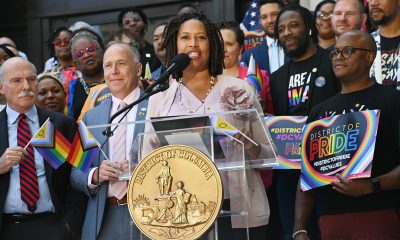
 District of Columbia4 days ago
District of Columbia4 days agoCapital Pride wins $900,000 D.C. grant to support WorldPride
-
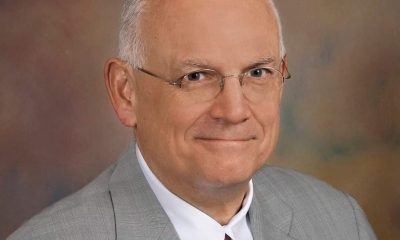
 Obituary3 days ago
Obituary3 days agoLocal attorney, LGBTQ rights advocate Dale Sanders dies at 75

